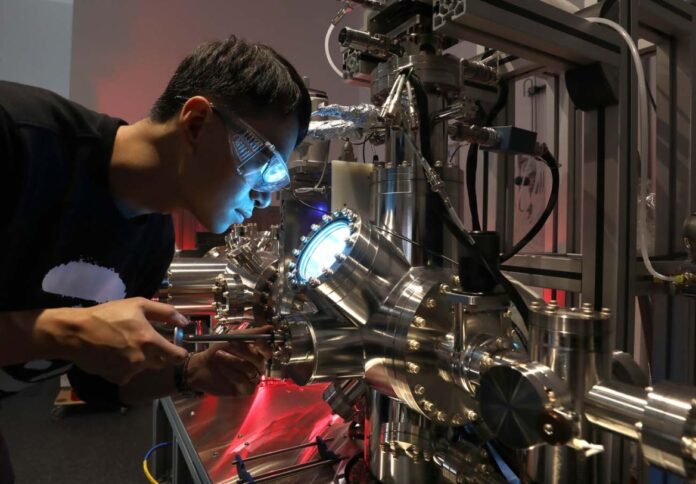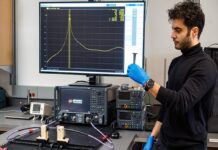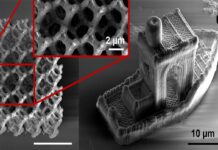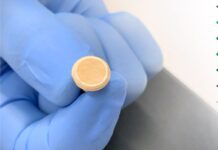
Scientists from UNSW Sydney and the University of Cambridge have used novel methods to detect ‘crackling noise,’ the acoustic representation of atoms’ movements in response to pressure, offering potential insights for pioneering studies in materials science and medicine.
In a study recently published in Nature Communications, Professor Jan Seidel and his lab, from the School of Material Science and Engineering, were able to record the crackling noise of just a few hundred atoms, in experiments that lasted over eight hours.
“What we might learn from studying crackling noise at the microscopic scale could potentially be applied to the study of crackling noise in a range of different fields, from mining to medicine, to neuroscience and materials science,” explained Prof Seidel.
“This means that studying atoms in the lab this way could lead to new information about crackling noise in different contexts,” he added.
Prof Seidel, and his team at the ARC Centre of Excellence in Future Low-Energy Electronics Technologies (FLEET), took on the challenge to develop a new method to observe crackling noise at the smallest scale.
Researchers said the novel method for measuring nanoscale crackling noise involves a minuscule diamond needle and an acoustic enclosure.
“We wanted to record the crackling noise of the selected materials, not the crackling of other external elements. This required a quiet environment, isolated from building vibration, and an extremely hard material for the needle that wouldn’t be impacted by applying a force,” the professor explained.
“We tested this on lots of materials and under slightly different conditions,” added Prof Seidel.
In the end, researchers found that the best way to record crackling noise at the atomic level was to leave the experiment running overnight and for the tip of the needle to slowly press into the material over eight hours.
Together, the team were able to record the crackling noise of approximately 30 nanometre deep areas – the equivalent of the displacement of approximately 100 atoms.
“There we could see, for the first time, the full spectrum of crackling noise and relate it to specific forms of atomic avalanches. This is indeed a breakthrough because we had no idea, just a hope, that for such small indentations we can detect crackling noise! Now we know and the technique can be refined for other specific applications,” remarked Prof Seidel.
Importantly, using a scanning probe microscope (SPM), the team were able to scan the material surface topography and locate specific areas that they wanted to target to listen to the crackling.
“Our method allows us to study the crackling noise of individual nanoscale features in materials, such as domain walls in ferroelectrics,” noted Prof Seidel.
According to the professor, this research raises new questions from a fundamental research point of view.
“We can now look at different types of nanoscale features in materials and study how they crack or how they deform and that might enable the development of completely new technology,” he stated.
One of the method’s most intriguing aspects is the fact that individual nanoscale features can be identified and located by imaging the material surface before indenting it and making it crackle.
“For example, we might learn more about the behaviour of domain walls, that are particularly interesting for making energy-efficient electronics and better solar cells,” Prof Seidel said.
He concluded, “Now that we know that crackling noise can be measured at very small length scales, potential new applications are significant. We can look at metals and focus on weak spots where the metal breaks and concentrate.”




















